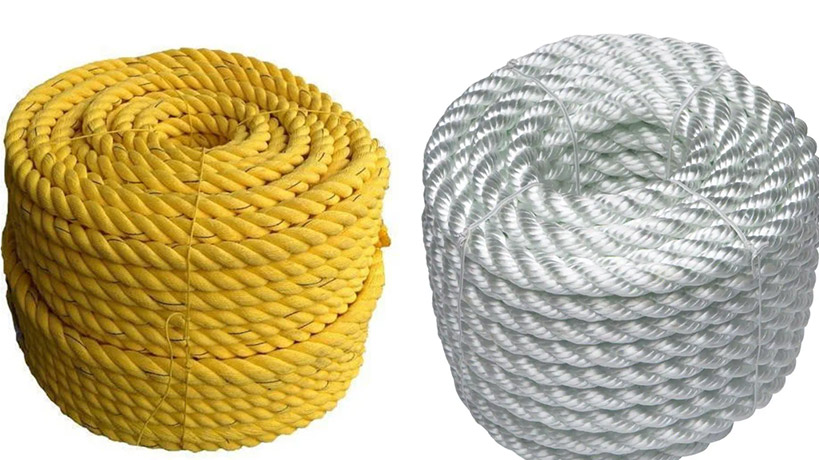You may have heard the name of nylon rope. Ropes are divided into two main categories: natural rope and synthetic rope. Natural ropes are ropes that are made with natural materials compatible with the environment, and synthetic ropes are produced from polymer raw materials. Nylon ropes are a type of synthetic ropes that are produced with polyamide grade polymer raw materials. These ropes are the most popular among synthetic ropes. In this article, we are going to learn about nylon ropes. Stay with us.
Nylon rope
Nylon rope is also known as polyamide rope because it is produced from polyamide raw materials. These ropes have very good resistance to wear and heat. These ropes are produced from three polyamide strands in orange and black colors. Nylon rope is famous for its elasticity and ability to absorb shock loads. This rope does not rot and is resistant to oil, gasoline and most chemicals.
What is plastic rope?
Ropes produced from raw materials such as polyethylene and polypropylene are known as plastic ropes. The use of these ropes is in keeping objects, transportation and packaging. Unlike nylon rope, these ropes do not weaken and become stronger if exposed to water. These ropes are produced in three grades. First-class rope is produced from new and high-quality raw materials. Second grade rope is produced from recycled raw materials known as recycled granules. First and half grade rope is produced from the combination of first grade and second grade raw materials. First and half and second grade rope is less transparent and the color of the rope is not as shiny as the first grade, but it is very suitable in terms of quality and price.
The difference between nylon rope and plastic rope
It may be thought that nylon rope is the same as plastic rope. It is true, but nylon rope is a type of plastic rope, like the ropes made of polyethylene and polypropylene. Nylon rope is produced from nylon granules and polyamide. Nylon ropes have more resistance than polyethylene ropes and polypropylene ropes and are more popular among consumers.
Features of nylon rope
- These ropes have very good abrasion resistance.
- They have anti-UV properties and have good resistance to the harmful rays of the sun.
- Nylon rope has high strength and impact.
- These ropes have a “memory” to return to their original length when stretched.
- It can bear the heaviest loads and the most weight.
Application of nylon rope
This type of rope is used in various industries due to its unique features. Due to its elasticity, it is used for fall protection or rescue equipment. The most common uses are towing lines, anchor lines, pulleys, winches, fittings, fall protection systems, fishing nets, etc.
Advantages of nylon rope
- They are strong and sturdy.
- It is smooth and has no bends.
- They are resistant to wear.
- They are resistant to ultraviolet rays.
- They have good heat resistance.
- Unlike natural ropes, they are highly resistant to mold.
Disadvantages of nylon rope
These ropes absorb water and become weak in water. Despite the fact that water can weaken the strength of nylon, this effect is so small that nylon is still commonly used for mooring lines and anchor lines.
Conclusion
Ropes are used in all industries and are the tools of craftsmen. Natural ropes are less resistant than synthetic ropes and nowadays synthetic ropes are more popular among consumers. Nylon rope is one of the most widely used synthetic ropes. In fact, nylon rope is an excellent choice for any type of work due to its strength, elasticity and durability in any environment. The all-around durability of nylon rope makes it useful for any job in any situation. So buying nylon rope can be a good choice. We hope this article was useful for you.






